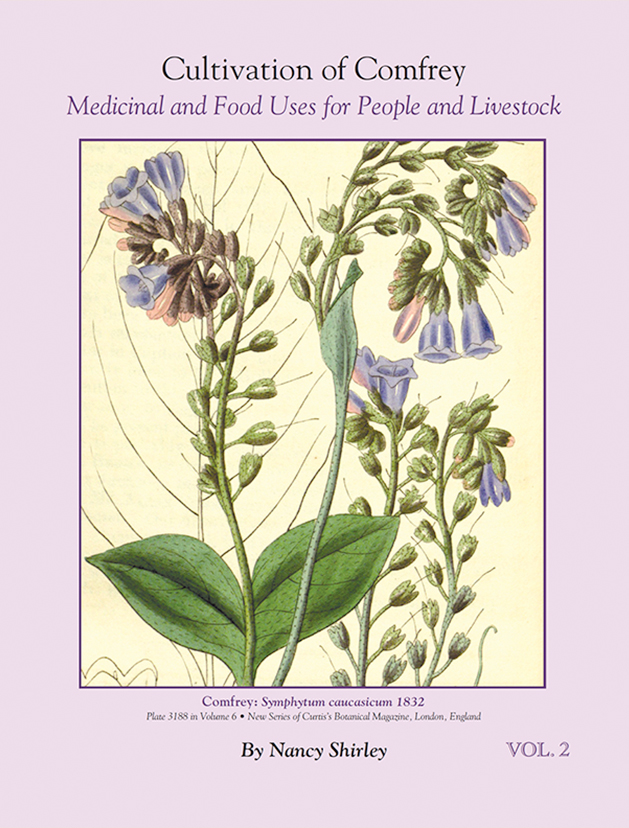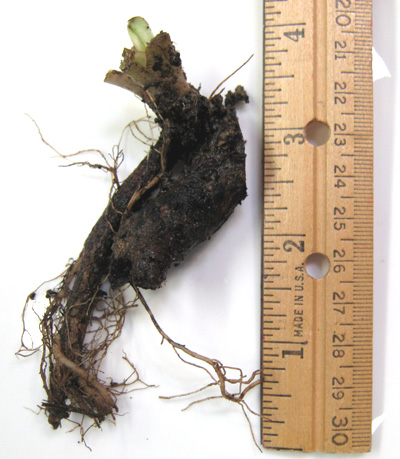

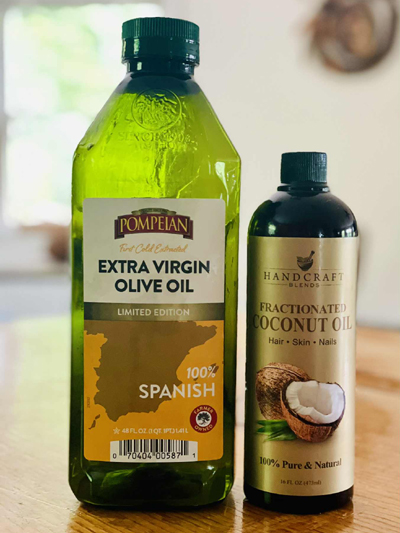
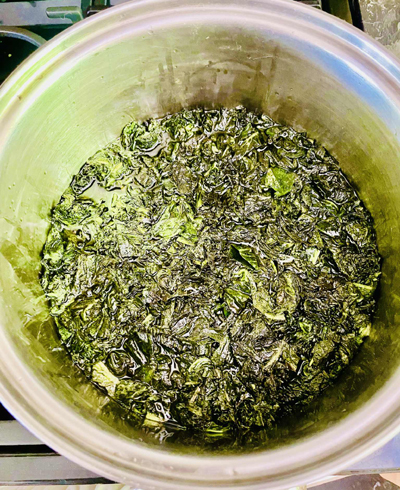

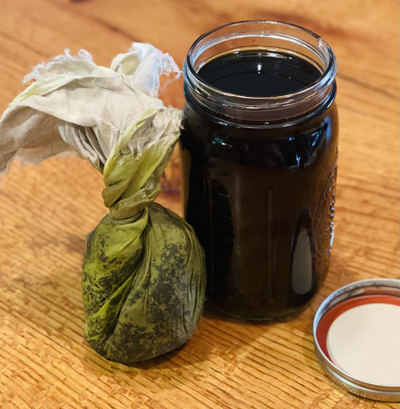 |
Comfrey
Extracts
1. Water extracts acids, alkaolids (some), alkaloid salts (most), coloring matter, essential oils (some), glycosides, gums, mineral salts, mucilage, pectin, proteins, sugars, tannins.
2. Alcohol extracts acids (organic), acrid constituents, alkaloids, bitter constituents, chorophyll, essential oils, glycosides, resins. Alcohol does not extract minerals, gums, or mucilage.
3. Infused oil extracts resins, essential oils, and flavonoids.
-Organic Growers School, Asheville, North Carolina, www.organicgrowersschool.org; Training, workshops, conferences, 2018.
Comfrey Leaf or Root Infusion
Infusion is extracting chemical compounds from plants in a solvent such as water, oil or alcohol, by suspending it in the solvent over time. An infusion is also the name for the liquid that is created.
Herbal oils are plant extracts where the solvent is always vegetable oil with olive oil being the most common.
Cool infusion method: store in cool dark place.
Warm infusion method: put on low heat on stove, or place in sun.
If using fresh Comfrey leaves, wilt them first for 12-24 hours because too much water in the oil can cause it to go bad.
After putting cut Comfrey leaves in jar (push down leaves with medium pressure) and pouring in oil, use a knife or stick to make sure the oil has reached all parts of the leaves.
In the below methods the time for infusing range from 3 days to 1 month. The longer you leave the infusion before straining, the stronger the infused oil. The oil can be strained with gauze, cheesecloth, loose-weaved cloth, metal strainer, bamboo strainer, or similar tool. If using cloth, a funnel is helpful.
“Herbal oils (real phytols or infused oils) are coming into fashion with certain aromatherapists.
These include arnica (Arnica montana), calendula (Calendula officinalis, pot-marigold), centella (Centella asiatica, gotu kola or hydrocotyle), Comfrey (Symphytum officinalis), Devil’s claw (Harpagophytum procumbens), echinacea (Echinacea purpurea), fenugreek (Trigonella foenumgraecum), lime blossom (Tilia sp.), meadowsweet (Filipendula ulmaria) and St John’s wort (Hypericum perforatum). Most are tea-like or alcoholic extracts, not essential oils, and have no aroma.
All are well known as herbal remedies, usually taken internally or applied to burns or bruises, as poultices or compresses, but many are potentially toxic orally and are sensitisers and should be given only at the advice of a qualified herbalist – not an aromatherapist.
There is no toxicological evaluation for their aromatherapeutic application and their possible dermal irritation or sensitisation is often unknown, therefore their use should be restricted in pregnancy.”
-Aromatherapy Science: A Guide for Healthcare Professionals by Maria Lis-Balchin, BSc, PhD. London, England: Pharmaceutical Press, 2006. (Chapter 7: ‘The Safety Issue in Aromatherapy’.)
(Phytol is a liquid alcohol found in cosmetics, shampoo, toilet soap, household cleaners and detergent.)
(A chemical sensitizer causes allergic reactions after exposure.)
“Comfrey-infused olive oil is used to create healing salves. Before infusing
leaves in oil, they must be fully dried. Wet leaves will cause oils to become
rancid, and capped jars may burst under pressure. Hang leaves to dry in
a shaded spot with good air circulation.”
-‘Culturally and Economically Important Nontimber Forest Products of Northern Maine: Plant Profiles: Comfrey’ by United States Department of Agriculture: Forest Service, Sustaining Forests, Northern Research Station, Madison, Wisconsin, May 2010.
“Comfrey Root and/or Leaf Oil Infusion: Put 4 ounces (113 grams) of herb (finely chopped or ground) in a clean, dry quart (0.94 liter) jar and cover with oil of choice. Oil level should be 1-2 inches (2.5-5.0 cm) above herb.
Method 1: Store in a cool dark place for 1 month, shaking mixture daily.
Method 2: Fill saucepan halfway with water, place on low heat and put jar in the water, let set for 3 days.
Method 3: Place jar of herbal oil in direct sunlight for 10 days.
Next: After the allotted time, strain herbs from oil with cloth or gauze and store in a clean, dry container. Comfrey infused oil or fine powder can be added to a suppository blend.
Comfrey infused oil can be used directly on skin or used to make a salve and mixed with other herbs if desired.”
-‘Comfrey, Symphytum Officinale, Boraginaceae Family’ by Sarah Heany, Highland Midwife Birth Services LLC (TM), Yakima, Washington, November 2011.
“Herbal oils are often used as the base of other herbal creations such as salves, creams, scrubs and lotions.
Folk Method of Oil Infusion: Fill a mason jar halfway with dried, coarsely ground herb(s). Add oil to reach the top of the jar and close the lid tightly. Place the jar in a paper bag and set it in a warm place.
Shake the jar several times per day for 1 or 2 weeks. Then strain the oil into another jar, secure the lid, and let it sit for a few more days. Strain the oil again with fine cheesecloth. Pour the herbal oil into a clean, dry jar, and store it in a cool, dark place.”
-The Herbal Apothecary: 100 Medicinal Herbs and How to Use Them by J.J. Pursell. Portland, Oregon: Timber Press, 2015, page 199.
“Graeme Little farms around 2500 Bocking #14 Comfrey plants on his 20 hectare French Island property in Victoria, Australia.
Once the Comfrey leaves are harvested, Graeme makes the oil, firstly
grinding the comfrey root in a food processor, then adding olive oil,
although he has experimented with almond and coconut oils. Then the mixture
is cooked using a double pan method over hot water for around 3 hours, stirring
every 15 minutes. The mixture is then put through a juicer to leave a clear
oil.”
-‘The Comfrey Man’ by Roger Clark, The Waterline News, www.waterlinenews.com.au, Grantville and Districts, Victoria,
Australia, Volume 1, No. 12, August 2015.
“Basic formula for dry herb infused oils:
Comfrey root oil: 100 grams (3.5 ounces) dried and coarsely ground Comfrey roots. 500 ml (16.9 US fluid ounces) olive oil.
The Comfrey oil is best used for speeding healing of broken bones, shallow wounds, scratches, diaper rash, abraded (scraped), or wind-burned skin, etc.”
-Making Plant Medicine by Richo Cech. Williams, Oregon: Herbal Reads, 2016, page 85.
“How to Make Your Own Comfrey Oil Infusion:
If possible, use freshly dried herbs for this purpose.
To get fresh dry Comfrey root: Dig the root when it is dry weather. Clean by hand or use some water and a vegetable brush. Brush the root gently. Chop finely; lay out on a paper bag overnight. To get freshly dry leaves: Harvest, wipe the dirt off with a towel and allow to dry whole overnight.The Comfrey roots should be broken down by chopping. Break up the Comfrey leaves by hand.
Method with Low Heat:
Create an herbal oil infusion by infusing 2 cups (0.47 liters) of cut Comfrey leaves in 4 cups (0.94 liters) of olive oil with a steady low heat (110 F degrees = 43 C) for two to three weeks. Strain and pour into a clean, dry bottle.
Method by Cold Infusion:
Ingredients: 8 ounces (236 ml) Comfrey leaf (70 percent), 4 ounces (118 ml) Comfrey root (30 percent), extra virgin olive oil, to cover, approximately 16 ounces (473 ml). From ‘Wildly Natural Skin Care’.
Put all the herbs in a 16-ounce (473 ml) glass jar, cover with olive oil and cap and shake. This can steep for 28 days. To strain, use a clean old shirt lined in a strainer, pour the mix through into a bowl and squeeze the shirt with herbs in it. The strained liquid is your Comfrey oil.”
-Dr. Joseph Mercola, Chicago College of Osteopathic Medicine, Board Certified; New York Times bestselling author such as ‘Fat for Fuel’; based in Illionis, www.mercola.com, 2018.
|






